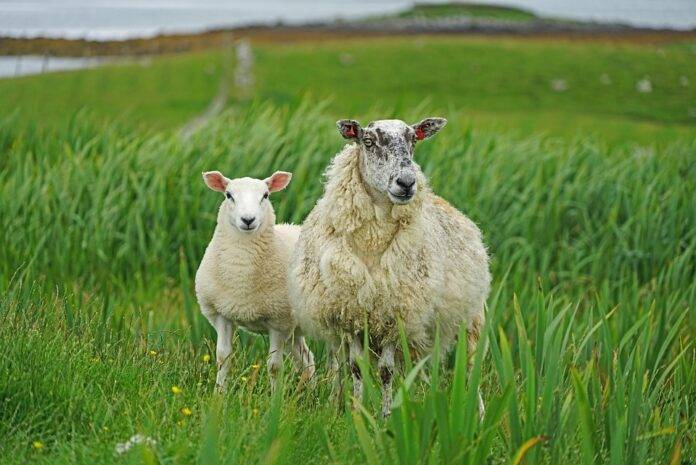Introduction
The global sheep meat market is influenced by a myriad of economic factors that shape pricing dynamics. Understanding these factors is essential for producers, traders, and investors within the sheep meat industry. This report delves into the top 10 economic factors influencing global sheep meat prices, providing detailed insights and relevant data.
1. Supply and Demand Dynamics
The basic economic principle of supply and demand plays a pivotal role in determining sheep meat prices. When demand exceeds supply, prices tend to rise. Conversely, if supply surpasses demand, prices may decline. In 2022, the global sheep meat production was approximately 15.3 million metric tons, with the largest producers being China, Australia, and New Zealand. As consumer preferences shift towards healthier meat options, the demand for sheep meat has seen a gradual increase, particularly in Asia and the Middle East.
2. Global Trade Policies
Trade agreements and tariffs significantly impact sheep meat prices. For instance, the Comprehensive and Progressive Agreement for Trans-Pacific Partnership (CPTPP) has opened markets for New Zealand and Australian sheep meat exports to countries like Japan and Canada. In 2021, Australia’s sheep meat exports amounted to 300,000 metric tons, valued at approximately $1.3 billion. Conversely, protective tariffs imposed by countries can hinder trade, affecting prices.
3. Currency Fluctuations
The strength of major currencies, particularly the US dollar, influences global sheep meat prices. As the dollar strengthens, sheep meat prices in other currencies may rise, leading to reduced demand in those markets. For example, in 2022, the appreciation of the US dollar against the Euro impacted the purchasing power of European importers, resulting in a decrease in sheep meat imports by 5%.
4. Feed Costs
Feed prices are a significant component of sheep farming costs. The cost of grains and pasture directly affects the overall cost of production. In 2021, the global wheat price averaged $265 per metric ton, which directly influenced the cost of raising sheep. High feed costs often lead to reduced profitability for farmers, which can subsequently decrease supply and increase prices.
5. Disease Outbreaks
Animal health issues, such as foot-and-mouth disease or ovine pulmonary adenocarcinoma, can severely disrupt sheep meat production. For instance, the 2020 outbreak of foot-and-mouth disease in several South American countries resulted in a 15% drop in sheep meat production, contributing to a spike in global prices due to reduced supply.
6. Consumer Preferences and Health Trends
Changing consumer preferences towards organic and sustainably sourced meat are reshaping the sheep meat market. A 2022 survey indicated that 35% of consumers in the US prefer locally sourced meat, driving demand for premium sheep meat products. This trend has led to a price premium for organic lamb, with prices reaching $10.50 per pound, compared to conventional lamb at $7.50 per pound.
7. Climate Change and Environmental Factors
Climate change poses significant risks to sheep farming. Extreme weather conditions such as droughts or floods can impact pasture availability, leading to decreased production. For instance, the severe drought in Australia in 2020 resulted in a 20% decline in sheep meat production, which contributed to a price increase of 10% globally. Sustainable farming practices are increasingly being adopted to mitigate these risks.
8. Retail and Wholesale Price Trends
The prices at which sheep meat is sold at retail and wholesale levels also influence market dynamics. In 2022, the average retail price for lamb in the US was about $9.00 per pound, while wholesale prices averaged $7.00 per pound. Fluctuations in these prices affect consumer purchasing behavior and ultimately influence the overall market pricing structure.
9. Import and Export Volumes
The volume of sheep meat traded internationally affects global prices. In 2021, New Zealand exported approximately 350,000 metric tons of sheep meat, generating around $1.5 billion in revenue. Changes in import volumes, such as increased imports by China, can lead to price adjustments in exporting countries, impacting global price levels.
10. Technological Advancements in Farming
Advancements in agricultural technology, such as precision farming and genetic improvements, can enhance productivity and reduce costs in sheep farming. Farms equipped with advanced technologies can produce more meat at a lower cost, which can lead to increased supply and potentially lower prices. However, the initial investment in technology can be substantial, influencing short-term pricing before long-term benefits are realized.
Conclusion
Understanding the economic factors influencing global sheep meat prices is critical for stakeholders in the industry. From supply and demand dynamics to technological advancements, each factor plays a significant role in shaping the market. As the global landscape continues to evolve, staying informed about these factors can aid in making strategic decisions within the sheep meat sector.
[Read More: Global Sheep Industry Report 2025: Market Trends & Forecasts]




